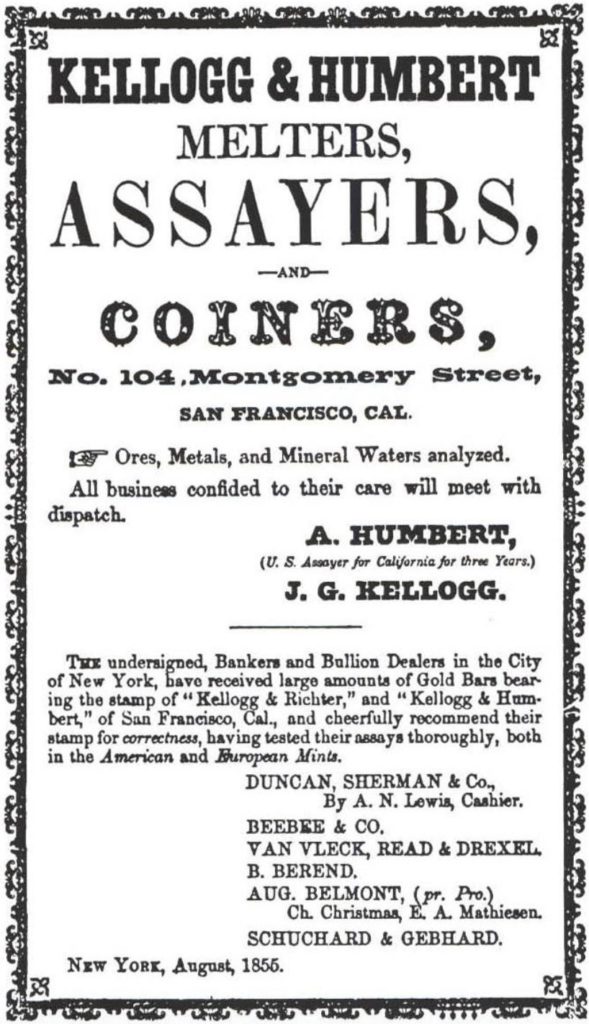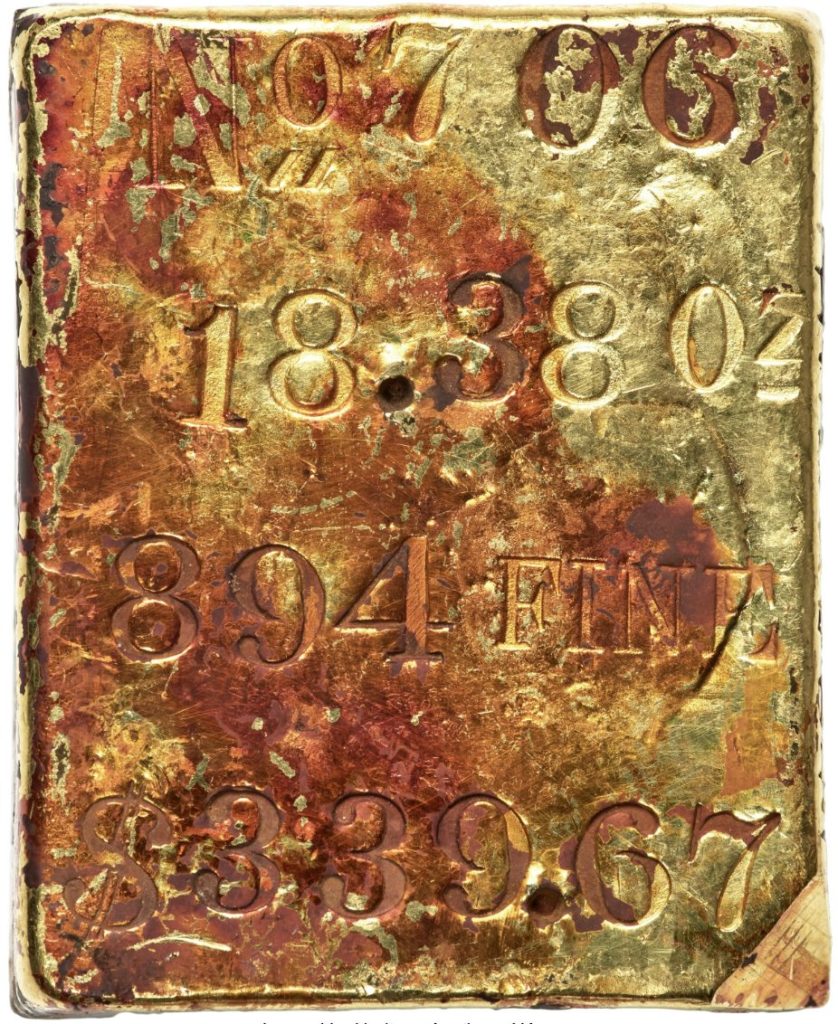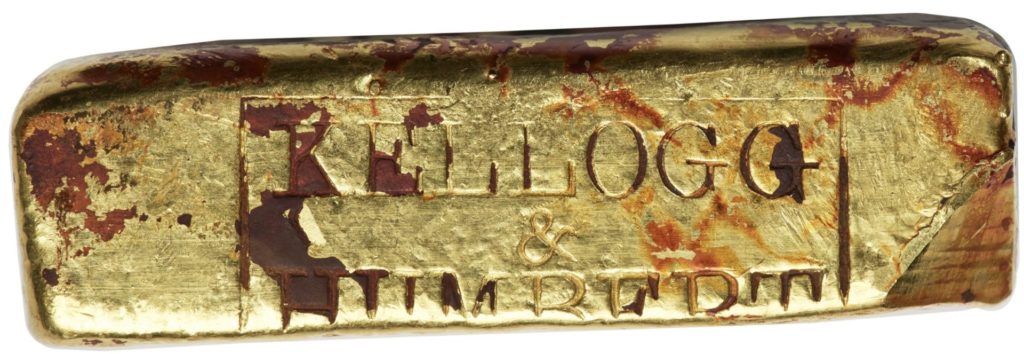The sinking of the SS Central America created a massive and accidental accumulation of treasure – at the bottom of the ocean. Bound for New York with tons of gold ingots, coins, nuggets, and dust mined from the California gold fields, its loss created a unique time capsule of information and artifacts of an era in which the very character and spirit of America blossomed.
While many historical objects, accessories, ship components and other items recovered from the SS Central America are being preserved for study by institutions and others, there were enough gold ingots and coins that this became a historic national treasure that could be shared.
The “Ship of Gold” will truly live on because of the fantastic historical retrospection.
Several assayers were well known during the California gold rush days, and 5 of them represent the ingots recovered on the SSCA. Until the recovery of the S.S. Central America buried treasure, very few assayer bars remain from the mid 1800’s.
Augustus Humbert & John Kellogg
In September 1850, Congress authorized the secretary of the Treasury to contract “with proprietors of some well-established works now in successful operation in California” to affix the stamp of the United States to bars and ingots, to assay gold and assign values to them. Moffat & Co. received the commission and appointed Augustus Humbert to become the U.S. Assayer of Gold. Humbert’s name and title were imprinted on coins issued under the government contract until 1852.
John Kellogg, a lawyer by trade, caught gold fever and arrived in San Francisco in October 1849. Kellogg secured a position with Moffat & Co. and remained with them during the operation of the U.S. Assay Office of Gold. Kellogg became a well-known name in San Francisco, having established several assaying partnerships in the early 1850’s, as well as striking a large number of gold coins in 1854 and 1855.
In the spring of 1855, John Kellogg and Augustus Humbert formed an assay office partnership, bringing together two of the best-known names in the San Francisco gold business. Augustus Humbert was such a prominent name in the gold industry that he was described, in the October 23, 1855 edition of the Alta California, as “a man who has done more than any single person we know of for the state.”

Gold bars issued by Kellogg partnerships were held in very high esteem, and most were shipped to New York or London. The treasure trove of Kellogg & Humbert monetary ingots, approximately 372 recovered from the S.S. Central America, confirms the historical record of how important the company, and the men who ran it, were to the exploding California economy during the Gold Rush era.
The Kellogg & Humbert ingots range in size from 5.71 oz to 933.94 Oz which boasts a whopping $17,433.57 in face value.
One of our most recent favorite ingots to hit the auction block was a beautifully toned and bright red ingot.


Kellogg & Humbert Gold Ingot. 18.38 Ounces. CAGB-539. This small to medium size Kellogg & Humbert bar stands out from most other S.S. Central America gold ingots because of the degree to which it features dramatic rust-colored surfaces. The natural patina is readily appealing and highly sought-after. In fact, a larger bar, also in this sale, with similar color was specifically set aside by its consignor for more than two decades because of its fabulous surfaces alone. This example is just as spectacular.


When gold is submerged underwater for a long time, especially when in contact with the iron hull of a ship, it can develop a rust-like substance on its surface. That happens because of a chemical reaction between the gold, water, and oxygen in the environment. In this case, the presence of iron from the S.S. Central America’s hull accelerated the process. The rust-like deposits can change the appearance of the gold, making it rough and less shiny. It’s important to note that this is not true rust like seen on iron, but rather a buildup of iron compounds on the gold’s surface.
The top side is vertically oriented and laid out as follows: No. 706 / 18.38 Oz. / 894 FINE / $339.67. The serial number appears again at the upper reverse. There was enough space on the edges of this thick ingot for Kellogg & Humbert to impress their hallmark. As mentioned earlier, eye appeal is absolutely terrific, and the manageable size contributes further to the ingot’s charm.
[08/2023] https://coins.ha.com/itm/s.s.-central-america-gold-ingots/kellogg-and-humbert-gold-ingot-1838-ounces/a/1364-3137.s ($90,000)
Census, see: https://finestknown.com/california-gold-rush-monetary-ingots/
